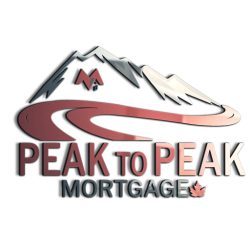Mortgage Rates and Inflation
There has been much discussion about mortgage rates and inflation in the news these days. The rate environment of the last 6 months has been upward, and stressful for everyone: new buyers, existing homeowners that have a mortgage up for renewal, and/or anyone looking for a refinance.
While my crystal ball is as cracked as anyone’s this blog post is going to be an attempt at perspective.
This is an excerpt from the Bank of Canada’s press release of January 26th, 2022: “Persistent supply constraints are feeding through to a broader range of goods prices and, combined with higher food and energy prices, are expected to keep CPI inflation close to 5% in the first half of 2022. As supply shortages diminish, inflation is expected to decline reasonably quickly to about 3% by the end of this year and then gradually ease towards the target over the projection period. Near-term inflation expectations have moved up, but longer-run expectations remain anchored on the 2% target. The Bank will use its monetary policy tools to ensure that higher near-term inflation expectations do not become embedded in ongoing inflation.” At the time of this press release, they maintained the policy rate (no upward changes).
Approximately 1 month later, Russia invaded Ukraine and the simmering inflation fire that the Bank of Canada was hoping to contain, flared. Not only did the Bank take action with 3 policy rate increases totalling 1.25% (0.25% March 2nd, 0.50% April 13th, and 0.50% June 1st), the 5 & 10 year bond yields sky-rocketed putting the fixed mortgage rates of all terms, on a continuous upward trajectory.
The most recent StatsCan inflation figures for May, indicated that the Consumer Price Index (CPI) rose 7.7% year over year. It is worth noting however, that the Bank of Canada uses 3 core measures for their determination of inflation: CPI-trim; CPI-median; and CPI-common. Their definitions can be found here. Interestingly, the Bank’s figures based on their own core measures, came in closer to what they had projected in January: Table 4 Consumer Price Index statistics, preferred measures of core inflation. The highest component was CPI-trim which came in at 5.4% – not quite as overwhelming as the general CPI of 7.7%.
How does this impact us going forward?
Well, when everything gets more expensive, including the cost of borrowing, demand falls. People stop spending money which has the effect of putting water on the inflation fire. It is not the only fire-fighting tool, but it helps.
Lately, we have seen a welcome retreat on the bond yields: as of June 30th, the 5 year bond was 3.10 and the 10 year was 3.23. As a comparison, the 5 year bond on June 14th was 3.56 and the 10 year was 3.62. Could this be a sign that we are close to peaking with the fixed rates? Possibly. We don’t know when we will see fixed rates drop, but this recent downward movement is a nice sign that maybe, just maybe, the wind has gone out of the intense upward pressure that we have seen in the last 6 months.
For the prime rate, the Bank of Canada’s rate setting schedule for the remainder of 2022 is as follows: July 13th, September 7th, October 26th, and December 7th. A rate increase on July 13th is broadly expected. You have to wonder though, how long the Bank of Canada will maintain the upward momentum, especially when you look at their analysis from January. Maybe the Russia/Ukraine conflict will prolong our elevated inflation, but at some point, I believe the inflation fire will burn itself out.
For borrowers, I still think that a variable rate mortgage has appeal under the circumstances, if only to float the rate until the fixed rates become more palatable. Once the fixed rates drop to more affordable levels, you can convert from your variable to a fixed and lock-in if that is what is important to you. However, before any decisions are made to lock-in a rate there are penalty considerations that should be understood; this information page discusses the topic in detail here. There are 3 kinds of variable rate mortgages: one with a mortgage payment that stays the same (until a Trigger point is reached), one where the payments will fluctuate with the movements of the prime, and one that is capped. The available rates depend on your qualification, your level of down payment, and the amortization of the mortgage.
Feel free to reach out to me if you have any questions about these types of mortgages or any other matters related to mortgage financing.

